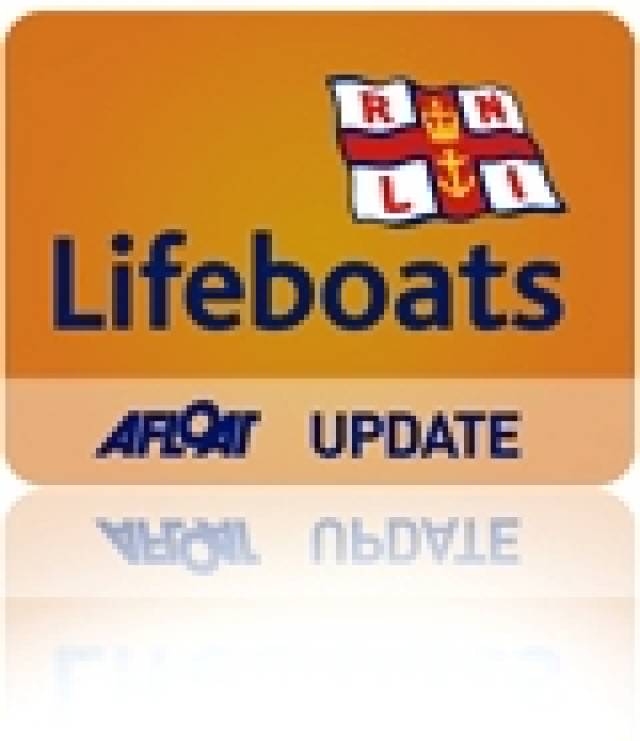#rnli – An early morning airline alert for Kilrush RNLI lifeboat gave its new Lifeboat Operations Manager her first callout in charge.
Newly appointed Lifeboat Operations Manager (LOM) at Kilrush RNLI, Pauline Dunleavy, had her first callout in charge of the Clare lifeboat station on the Shannon Estuary, when an alert was received early this morning (14 December 2014) and the lifeboat was launched to reports that a plane flying overhead had observed an indication that a fire may have broken out in the cargo hold.
In these circumstances it is standard procedure to launch the lifeboat and it gave Pauline a chance to see how fast the lifeboat can be launched and the response of the volunteers in times of emergency. Pauline was a helm at the lifeboat station before she stood down recently to take up the role of Lifeboat Operations Manager from the outgoing one, John Lambe.
The lifeboat was launched at 9.20am and kept a presence on the river before they learned that the flight, which was en route to France, had landed safely at Shannon airport and they were stood down.
Commenting on the callout Kilrush RNLI Lifeboat Operations Manager Pauline Dunleavy said, 'During my first callout in this new role, it was great to see the lifeboat crew respond to an emergency from the other side. I had the opportunity to see the work the lifeboat crew do and it showed me that with their ongoing training, our volunteers are ready for anything.'
'Thankfully in this instance we were stood down and everyone was safe but it does give us an opportunity to test our responses and to be ready to launch to anything. I know this role is a hugely important one at a lifeboat station and I look forward to working with everyone involved in Kilrush RNLI.'































































